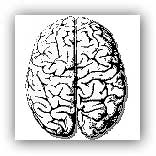News and Insights for
your best life. Online since 1998
- Home Health
- Breaking news
- In caso di...
- Per saperne di
più... - Medicina occidentale
- Medicine complementari
- Medicina cinese
e agopuntura - Omeopatia
- Fitoterapia

A new Indiana University study that examines the brain activity of alcohol-dependent women compared to women who were not addicted found stark and surprising differences, leading to intriguing questions about brain network functions of addicted women as they make risky decisions about when and what to drink.

The study used functional magnetic resonance imaging, or fMRI, to study differences between patterns of brain network activation in the two groups of women. The findings indicate that the anterior insular region of the brain may be implicated in the process, suggesting a possible new target of treatment for alcohol-dependent women.
"We see that the network dynamics of alcohol-dependent women may be really different from that of healthy controls in a drinking-related task," said Lindsay Arcurio, a graduate student in the Department of Psychological and Brain Sciences. "We have evidence to suggest alcohol-dependent women have trouble switching between networks of the brain."
The research is part of a larger new effort to understand the differences between men and women with respect to alcohol. Arcurio said most of the research on alcohol dependence has been conducted with men or groups of men and women. Yet several factors make looking at women "really important."
One such factor is that the physiological effects of drinking alcohol, which include liver damage, heart disease or breast cancer, set in much earlier in women than in men. For this reason, the suggested limit on the number of drinks per week that women can safely consume is eight, whereas for men, it is 14.
Secondly, binge-drinking in women is on the rise. One in five adolescent girls is binge-drinking three times a month. In women between the ages of 18 and 54, that number is one in eight.
The findings, however, reflect an equally sharp contrast in differences between the brain network activation in alcohol-dependent women versus the controls.
"It gets really interesting," Arcurio said, "comparing this pattern of activation to those in alcohol-dependent women, who behaviorally say they're more likely to take the high-risk drink compared to the controls. They don't deactivate anything. In contrast to the controls, alcohol-dependent women activate all three regions in question. They activate regions associated with reward (which release dopamine). They also activate frontal control regions involved in cognitive control and regions associated with the default mode network, involved in resting-state behavior. They are activating everything."
The investigators infer from these findings that alcohol-dependent women have trouble switching between networks. Being unable to activate one region and deactivate another in response to an alcohol-related situation means they are unable to use one strategy over another.
Furthermore, Arcurio said, "a lot of evidence suggests that switching between networks is influenced by the anterior insular and anterior cingulate regions of the brain, and we did find major differences in the insula between the alcohol-dependent women and controls. We're thinking the issue is pinpointed to that region."
The researchers are now running analyses to test the hypothesis that the insula helps in this process, which could offer new possibilities for intervention, with both behavioral therapy and medication.
Other investigators include professors Thomas James, director of the Perception and Neuroimaging Lab, and Peter Finn, director of the Behavioral Alcohol Research Laboratory, both in the Department of Psychological and Brain Sciences in the College of Arts and Sciences at IU Bloomington.
For more information
The current study, "Neural mechanisms of high-risk decisions-to-drink in alcohol-dependent women," appears in the Dec. 23 issue of Addiction Biology.
MDN
del Dott. Turetta
Quali sono i problemi o le disfunzioni che possono giovarsi di un intervento omeopatico d'urgenza e, di conseguenza, come dovrebbe essere un ideale armadietto medicinale omeopatico casalingo.- Home -
- Health -
- Depressione -
- Sexuality
- Environment -
- Food -
- Musica -
- Capirsi -
- Grafologia -
- Ridere
Copyright © 1998/2018 www.mybestlife.com tutti i diritti sono riservati eccetto quelli già di altri proprietari.
.In caso di
Pubblicità
Per saperne di più su
Pubblicità
Pubblicità
Pubblicità
Pubblicità


